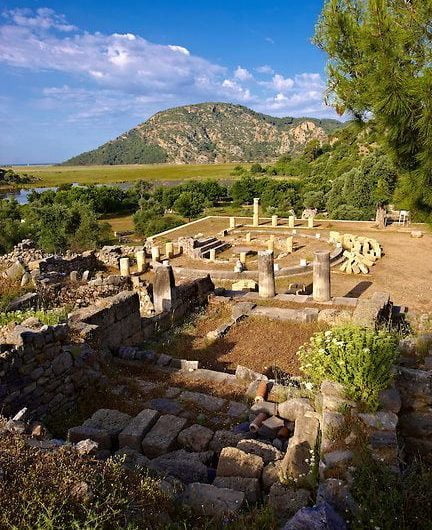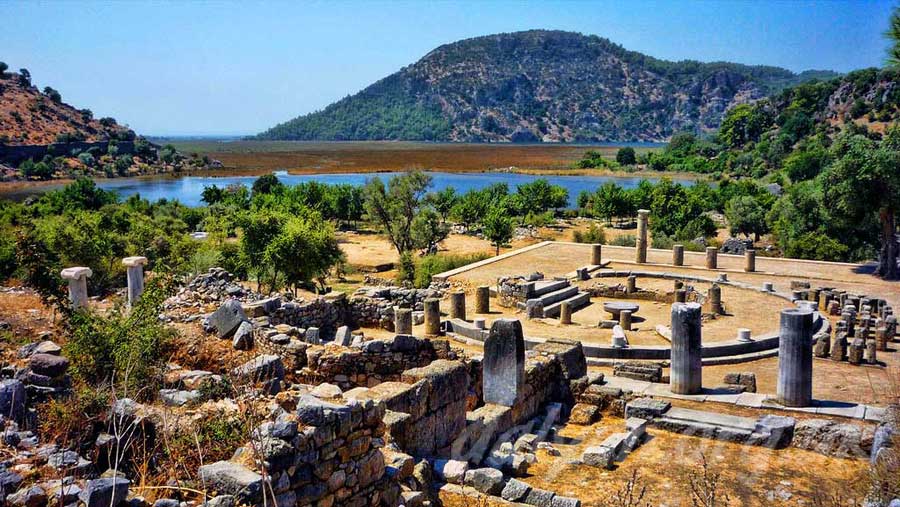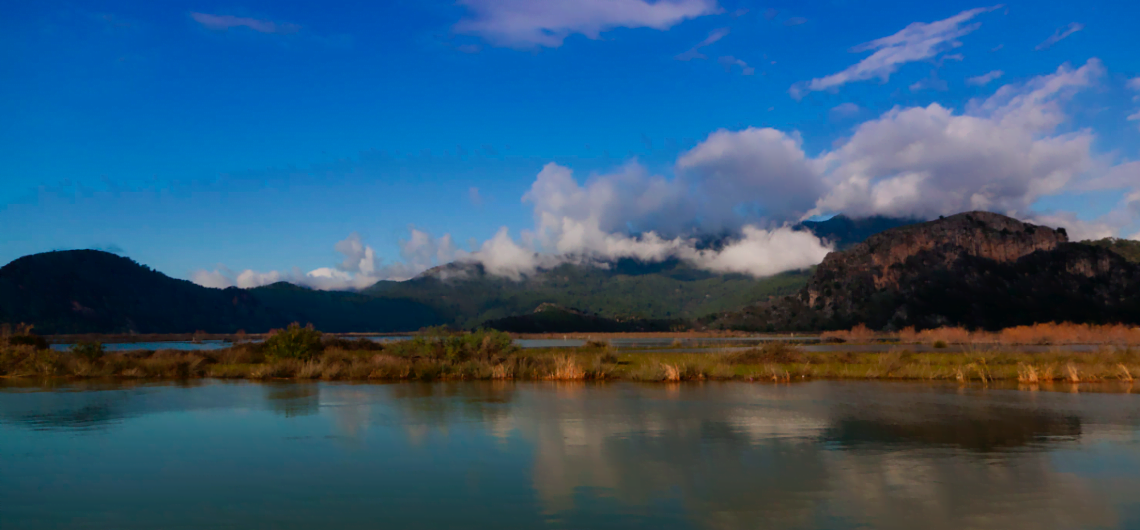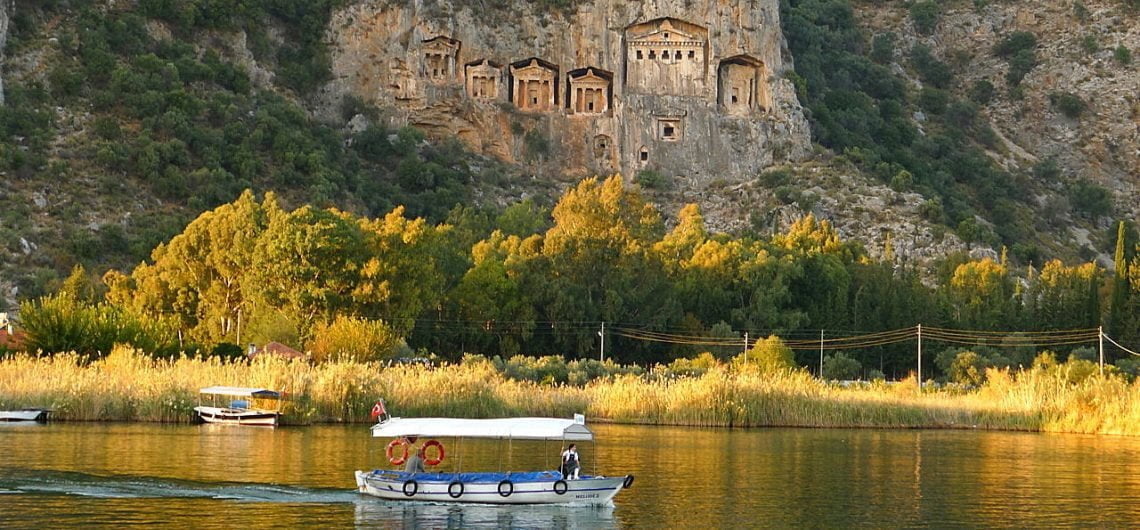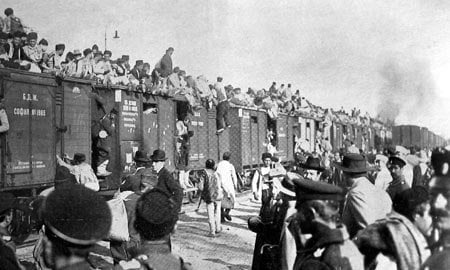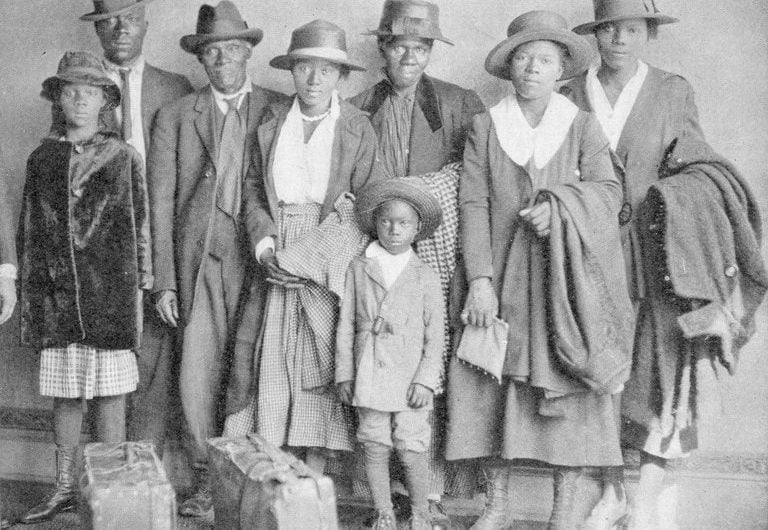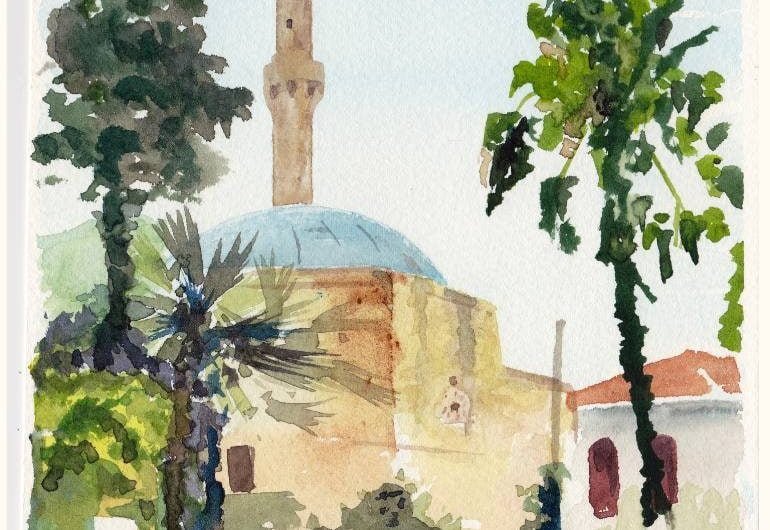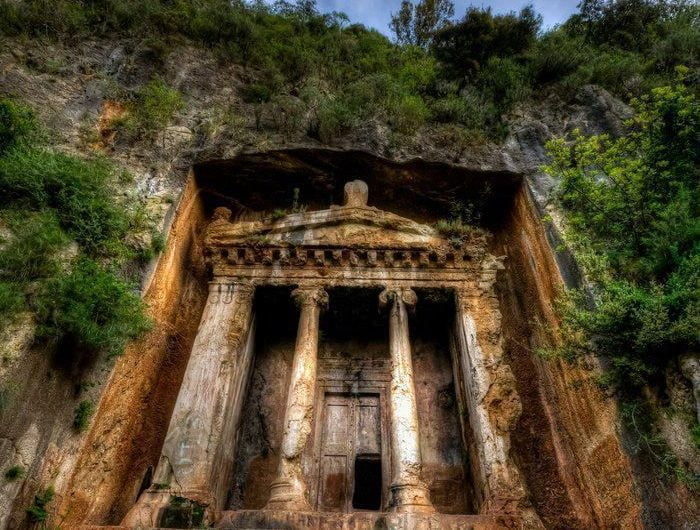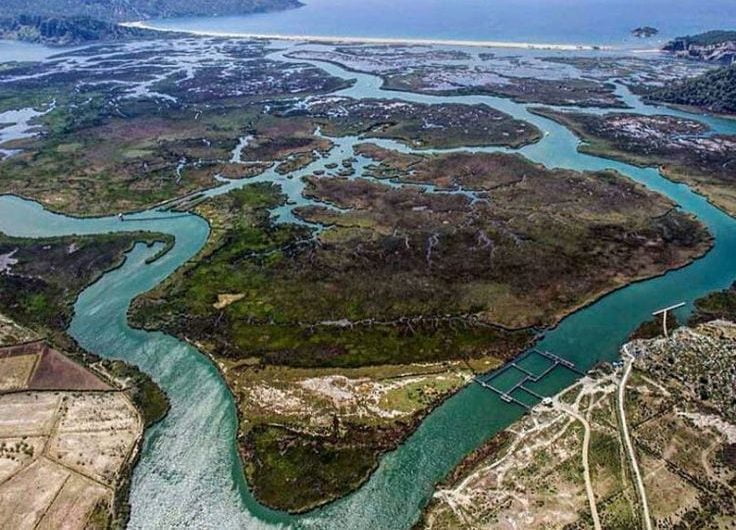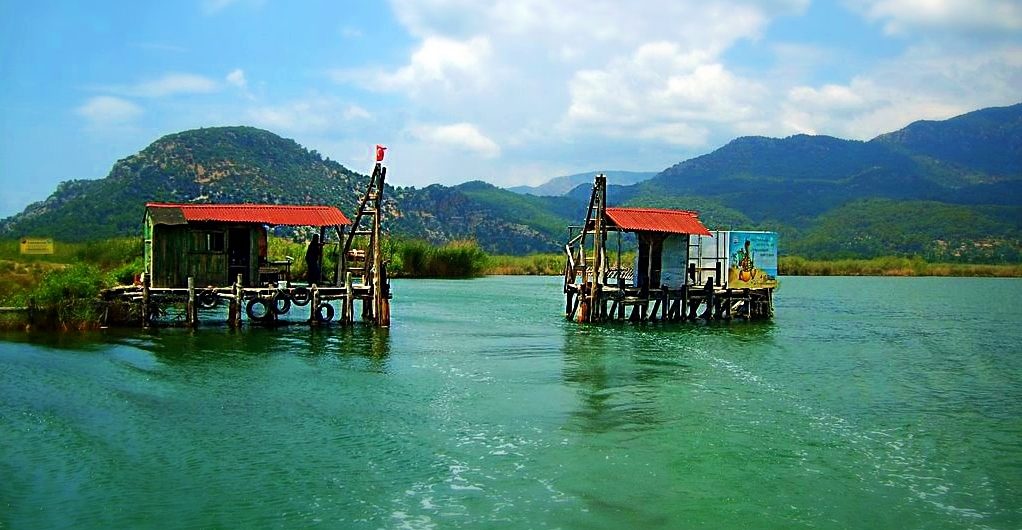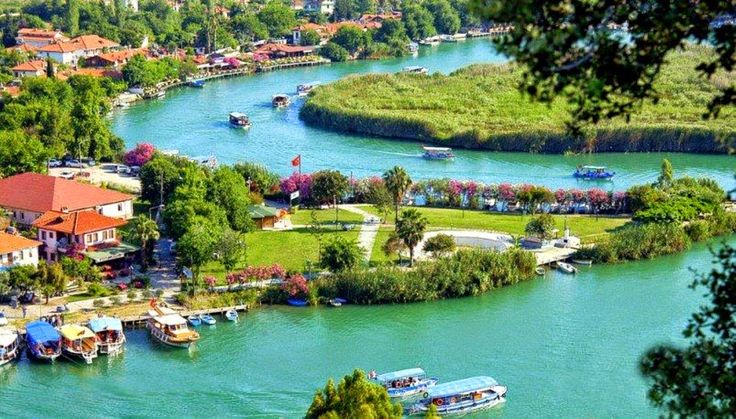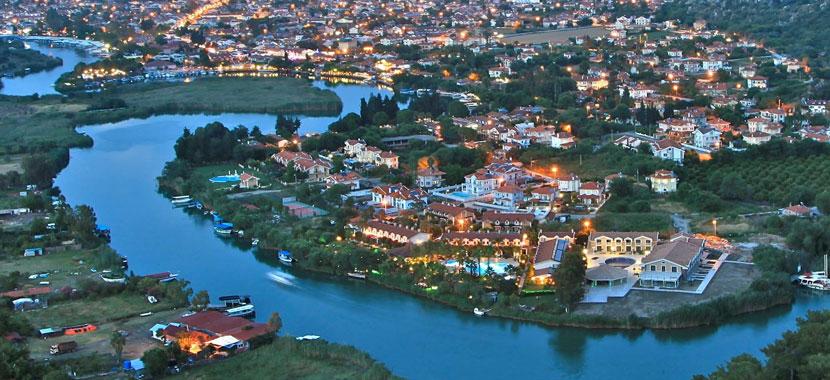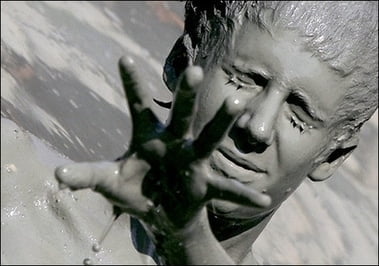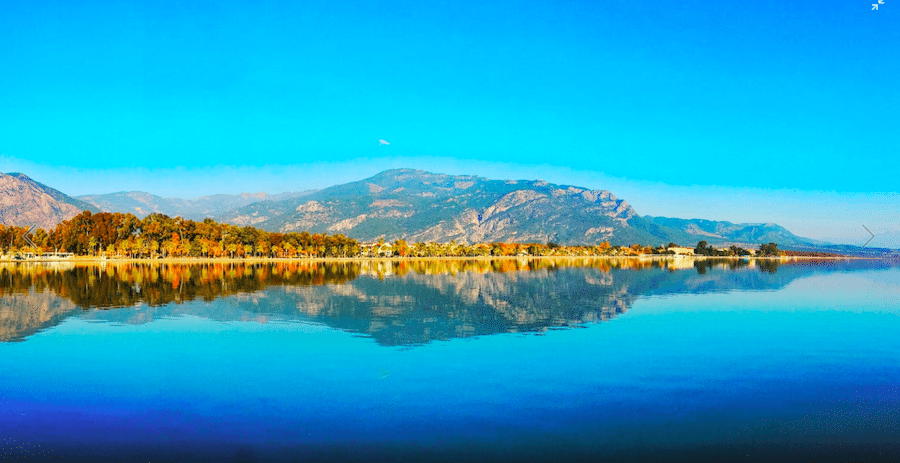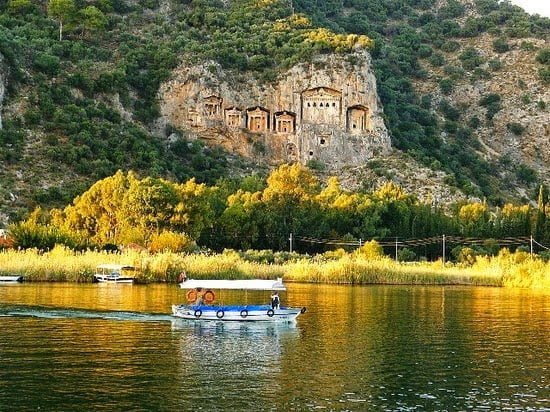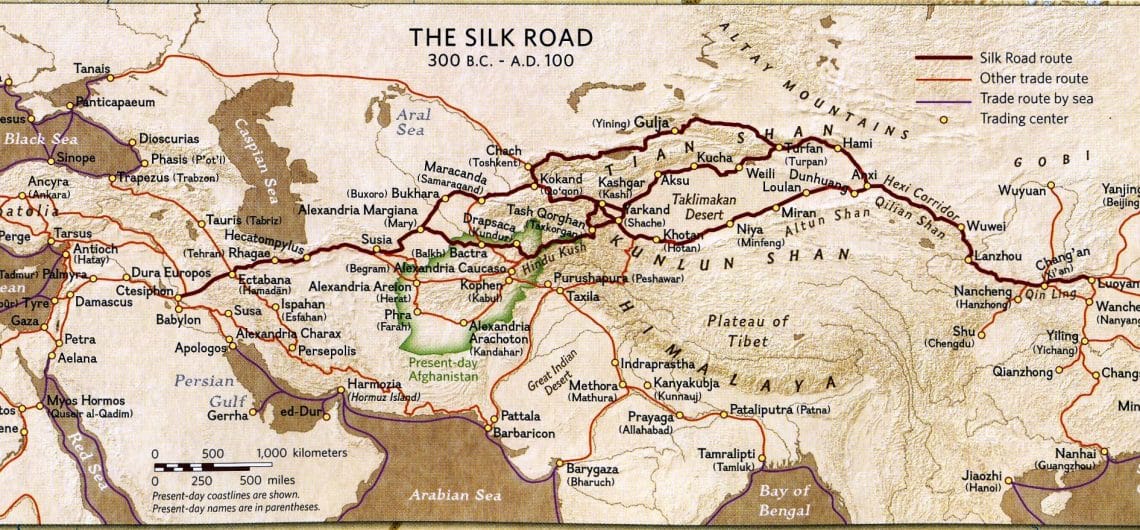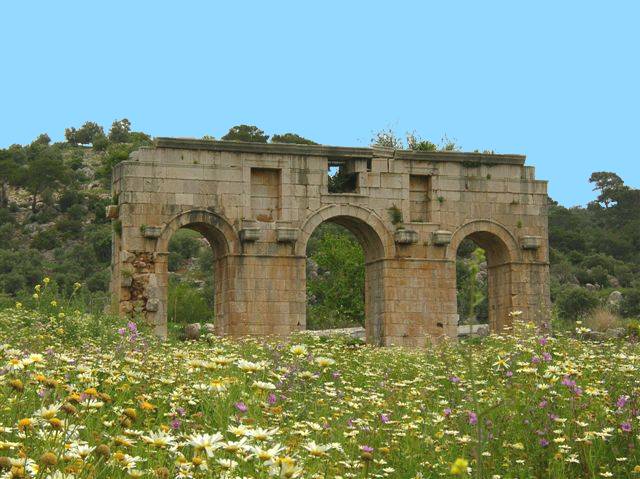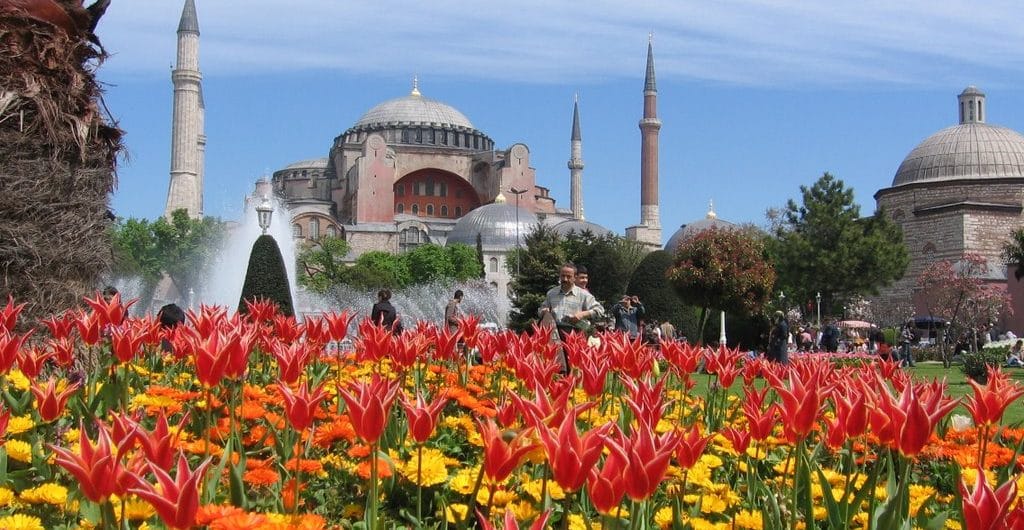THE SILK ROAD The Silk Road is an ancient caravan trail that stretches from East to West. From China through India, Asia Minor, ancient Mesopotamia, Egypt, the African continent, Greece and Rome, and finally to Britain. I have always been fascinated by the Silk Road. I am sure that the reality was very tough but I think of a glamorous version of Lawrence of Arabia. Images of evocative and romantic journeys through deserts and mountains. By and large a means of transporting rare and precious silk from China to Europe, the Silk Road finally became so much more. Many types of merchandise were traded along the Silk Road. In fact, Mesopotamia (present day Iran) became China’s closest trading partner. Paper, which had been invented during the Han Dynasty, and gunpowder, also a Chinese invention, had a greater impact on culture than silk. The rich spices of the east, also, contributed more than the fashion which grew up from the silk industry. Even so, by the time of Emperor Augustus, trade between China and the west was firmly established and silk was the most sought after commodity in Egypt, Greece, and, especially, in Rome. The greatest value of the Silk Road was the exchange of culture. Art, technology, philosophy, religion, language, science, architecture, and knowledge were exchanged along with the commercial goods. This was the first stage of globalisation and had the unfortunate side effect of being the perfect way to spread disease. Hence, the bubonic plague, is thought to have arrived in Constantinople via the Silk Road. The epidemic virtually decimated the Byzantine Empire. SILK ROAD IN ANATOLIA Due to its central position Turkey played an integral part along the Silk Road. There are still many well-preserved Caravanserais scattered throughout Turkey. In the North the Silk Road ran through: Trabzon, Gümüşhane, Erzurum, Sivas, Tokat. To Amasya, Kastamonu, Adapazarı, Izmit, Istanbul and
THE SILK ROAD The Silk Road is an ancient caravan trail that stretches from East to West. From China through India, Asia Minor, ancient Mesopotamia, Egypt, the African continent, Greece and Rome, and finally to Britain. I have always been fascinated by the Silk Road. I am sure that the reality was very tough but I think







